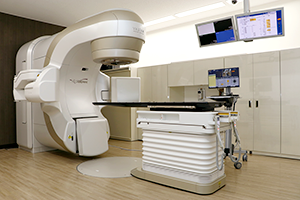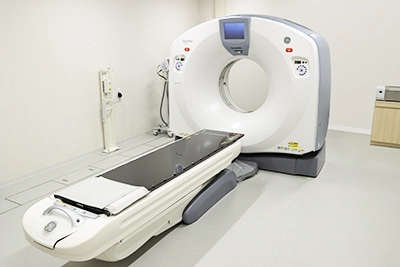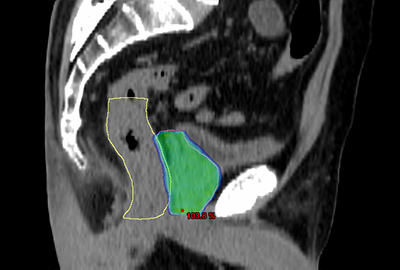Radiation Oncology
Introduction
Radiation therapy is one of the three major cancer treatments, alongside surgery and drug therapy. Unlike surgery, it does not require incisions, allowing for better preservation of function and appearance. Because it is less physically invasive, it is also a suitable treatment option for elderly patients.
In recent years, remarkable technological advancements have made it possible to perform high-precision radiation therapy, which focuses radiation specifically on cancerous areas while minimizing the impact on surrounding healthy tissues.
At our facility, we provide each patient with the most appropriate treatment based on the latest knowledge and technology.
Characteristics of this department
Our facility accepts treatment consultations and requests from both within and outside the hospital. We provide a wide range of external radiation therapies, including curative radiation therapy for lung cancer, esophageal cancer, and prostate cancer, postoperative radiation therapy for breast cancer, and palliative radiation therapy for bone metastases and other conditions.
We are equipped with treatment devices that support high-precision radiation therapy, enabling less invasive treatment options. Additionally, we also provide radiation therapy for benign conditions such as postoperative keloids and Graves' ophthalmopathy.
Treatment equipment
Radiation Therapy Device: VitalBeam (Supports VMAT – Volumetric Modulated Arc Therapy)

Our facility has introduced the VitalBeam radiation therapy system from Varian, which supports high-precision treatments. VitalBeam is capable of Image-Guided Radiation Therapy (IGRT), allowing for more accurate targeting of radiation. It also supports Stereotactic Radiation Therapy (SRT), commonly known as pinpoint irradiation, and Intensity-Modulated Radiation Therapy (IMRT), which minimizes radiation exposure to normal tissues compared to conventional methods.
In IMRT, the system utilizes Volumetric Modulated Arc Therapy (VMAT), a technique that enables complex radiation delivery while rotating the treatment machine, significantly reducing treatment time.

Stereotactic Radiation Therapy (SRT) for Brain Metastases
CT for Treatment Planning

This CT scanner is used for developing a radiation therapy plan, which determines the radiation delivery method and dosage before treatment. During the scan, patients are positioned in the same posture as they will be during treatment, using cushions and other immobilization devices to ensure accuracy.
Treatment Process
-
First Consultation
-
Brace Fabrication
Treatment Planning CT -
Treatment Plan
-
Radiation Therapy
Outpatient schedule
Morning 9:00~12:00(Reception8:00-11:30)/
Afternoon to Evening 13:30~16:30(Reception13:00-16:00)
| Mon | Tue | Wed | Thurs | Fri | |
|---|---|---|---|---|---|
| Morning | ● | ● | ● | ● | ● |
| Afternoon to Evening | ● | ● | ● | ● | ● |



